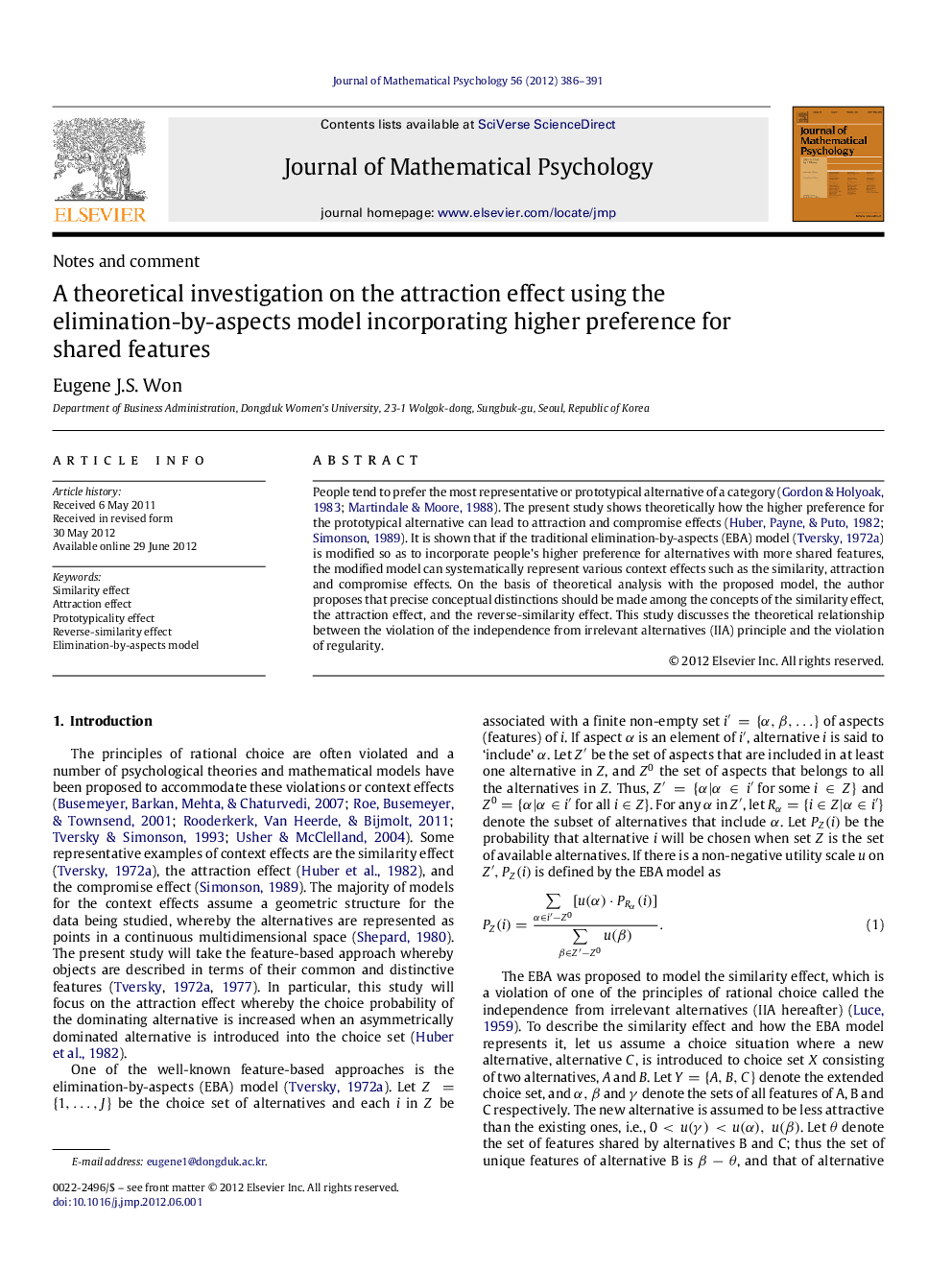| کد مقاله | کد نشریه | سال انتشار | مقاله انگلیسی | نسخه تمام متن |
|---|---|---|---|---|
| 326779 | 542546 | 2012 | 6 صفحه PDF | دانلود رایگان |

People tend to prefer the most representative or prototypical alternative of a category (Gordon and Holyoak, 1983 and Martindale and Moore, 1988). The present study shows theoretically how the higher preference for the prototypical alternative can lead to attraction and compromise effects (Huber et al., 1982 and Simonson, 1989). It is shown that if the traditional elimination-by-aspects (EBA) model (Tversky, 1972a) is modified so as to incorporate people’s higher preference for alternatives with more shared features, the modified model can systematically represent various context effects such as the similarity, attraction and compromise effects. On the basis of theoretical analysis with the proposed model, the author proposes that precise conceptual distinctions should be made among the concepts of the similarity effect, the attraction effect, and the reverse-similarity effect. This study discusses the theoretical relationship between the violation of the independence from irrelevant alternatives (IIA) principle and the violation of regularity.
► People show higher preference for more prototypical and representative alternatives.
► Alternatives with more shared features are perceived as more prototypical.
► A modified EBA model is proposed, incorporating the prototypicality effect.
► The proposed model can represent the similarity, attraction and compromise effects.
► The difference between the attraction and the reverse-similarity effects is clarified.
Journal: Journal of Mathematical Psychology - Volume 56, Issue 5, October 2012, Pages 386–391